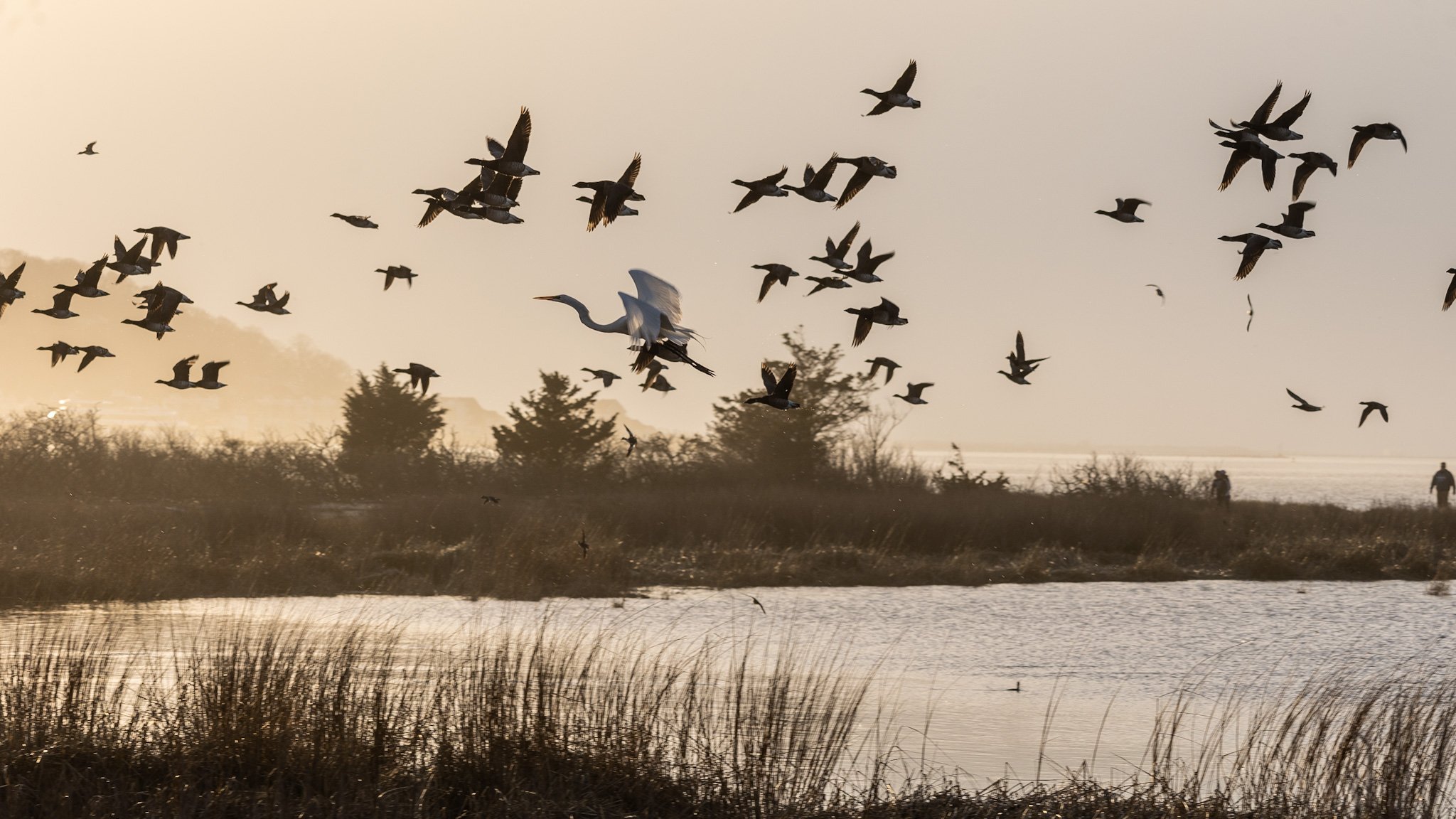
Bright Mornings
He hides beneath, entirely obscuring his figure from the light of dawn. He is careful to make no sound during descent - what little noise he makes is masked by the morning song of sparrows. In this moment he is freed from the harsh winds of winter, but other challenges persist. Cloaked in darkness his whereabouts are unknown to all but himself, crucial in this game of hunting and hiding. As he searches for an angle he is pushed up against the constraints of time: in but a few seconds this moment and the chances within will have evaporated.
Instantly the placid surface of the water is disrupted as a bufflehead emerges with the spoils of a successful dive. With a shudder the water that has beaded on his feathers rolls off in exactly the fashion nature intended. The beads hit the water with a splash so slight it is barely perceptible to the eye. Shrouded in a sun-dyed golden mist, the comings and goings of the waterfowl and occasional flows of ice are the only aberrations on the river’s surface. So bright are these mornings that the color of the water is often a similar flaxen to the reeds that dance at its shores and the feet of the snowy egrets that have fled this place and created an ecological vacuum that the bufflehead and other winter migrants exploit. Black and white from a distance, it is clear to the astute that the animal is truly kaleidoscopic - the perfect compliment to the morning’s still beauty. The head of the drake is iridescent, shimmering with greens and purples as the prey he has scrounged from the murky depths is tossed about. His movements on the surface are awkward yet endearing. Unable to chew nor hold his catch he tosses it with his beak until the moment it can slide down his gullet. In an instant the surface of the water begins to bare the same disruptions as it had when the duck emerged, though he remains atop the water. His glance darts forward and back, assuming the duty of sentinel as his brethren descend. The wind ruffling his down, it appears he is headed towards shore where his opposite number acts to seize this moment.
He hides beneath, entirely obscuring his figure from the light of dawn. He is careful to make no sound during descent - what little noise he makes is masked by the morning song of sparrows. In this moment he is freed from the harsh winds of winter, but other challenges persist. Cloaked in darkness his whereabouts are unknown to all but himself, crucial in this game of hunting and hiding. As he searches for an angle he is pushed up against the constraints of time: in but a few seconds this moment and the chances within will have evaporated.
This opposite number is myself, a birder cloaked beneath a camouflage blanket. The camouflage is a faded brownish-gray with splotches of white that perfectly mimic the stains of the dock I find myself on. A camera lens the only extension of my anatomy peaking out from behind concealment, the animals are unaware of my presence. I view them through the carefully cut slits with the naked eye and through a viewfinder. Intimate, eye-level observations of these skittish creatures bring warmth to these cold mornings. As time elapses this dance replays itself: the ducks dive and surface while the birder remains concealed. Slowly, the sun repositions itself, climbing skyward and westward until the once golden landscape now dons its traditional colors and the obligations of the day demand the birder’s attention. Like glimpses of the bufflehead, these bright winter mornings are far too fleeting.
